Scrapbooking stamps: functions, varieties and recommendations for use
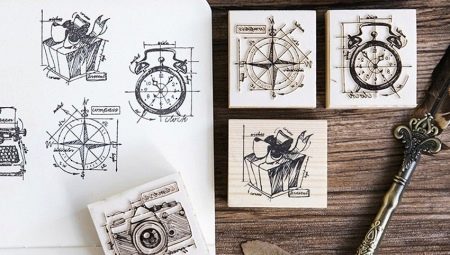
The desire to decorate personal things, making them unique and inimitable, arose in a person for a long time.
Scrapbooking is one of the types of handicraft used to decorate family albums. Later, using the technology of scrapbooking, they began to decorate letters, postcards, as well as various objects. In scrapbooking, there are several techniques for applying an image to a surface:
- distressing - technology of special aging of the image;
- embossing - obtaining a volumetric image, embossing;
- stamping - creating a picture using ink, stamps and applicators.
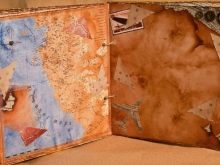
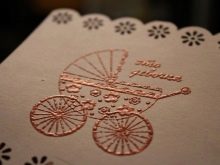
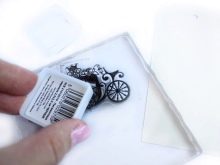
This concept appeared when it became necessary to apply the same drawing or inscription on several things. Let's talk about this technique in more detail.
What are they for?
Any item can be decorated with a scrapbooking stamp or template. The advantage of this item is that with its help, you can create a beautiful image, in general, not knowing how to draw. In addition, the stamp allows you to get an absolutely identical image as many times as necessary. You can use a stamp to decorate an entire batch of objects or create a repeating pattern on one surface.
Self-decorated buttons look very interesting - you can buy them ready-made or make yourself from epoxy resin, chips for various purposes, stickers and logos. Using the stamping technique, you can also decorate invitation cards for a wedding, anniversary or other celebration, graduation albums, greeting cards, boxes and other hand-made souvenirs. Today, stamping is actively used even to create a beautiful manicure.
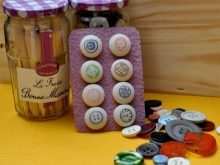
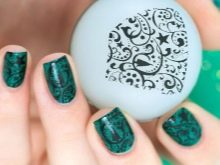
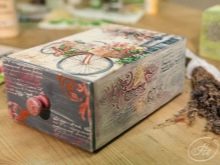
Views
Conventionally, all scrapbooking stamps can be divided into two main groups, each of which has its own strengths and weaknesses.
Transparent
The first group includes workpieces made of acrylic, silicone or various polymer resins. You can purchase both single copies and whole sets... All clear stamps are used in conjunction with a marked acrylic stand block, which can be packaged or sold separately. The size of the block must correspond to the size of the stamp, since the latter must fit entirely on the stand. Usually stamps made in Russia are made of polymers, and templates made in Asian countries (China, Taiwan and others) are made of silicone.
Advantages of transparent stamps:
- The applied image is immediately visible. This is especially important if you need to apply one drawing to another.
- The affordable price allows you to have several different stamps at once.
- The compact size creates certain storage advantages.
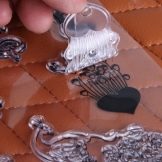

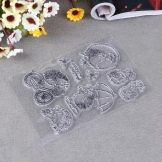
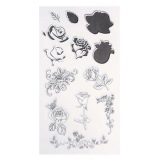
Rubber
Stamps can be made of foam or hard rubber. Advantages of rubber stamps:
- they are more durable than acrylic, and less deformed, which allows you to get a clear, correct impression;
- the depth of the relief of rubber stamps allows them to be used when working not only with paper or fabric, but also with harder surfaces - for example, with wood or ceramics;
- absorb paint and ink well;
- great for beginners.

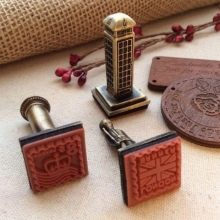
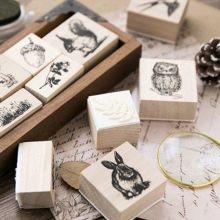
However, when working with them, you will have to make more effort to get a high-quality drawing or inscription.
The rubber stamp has three components.
- Base with impression and curves in order to make it more convenient to take on it. It can be made of wood, plastic or rubber.
- Buffer layer. To get a clear image when scrapbooking, it is necessary to properly distribute the load on the surface to be decorated.
- Rubber cliché.
There are also rubber stamps, which consist exclusively of one cliche without the use of a base. They are as compact as acrylics and at the same time are cheaper than specimens with a wooden base.

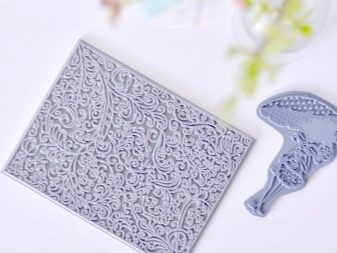
More recently, 3D stamps have been invented. They are a set of the main stamp and several additional ones and are designed to create a three-dimensional image. Using the main stamp, the outline of the picture is created, and additional stamps create the depth and color of the image.
Subtleties of use
In order to create a high-quality image, you need to know how to use stamps correctly. There are some simple rules..
- It is better to dip the stamp lightly in the ink rather than apply it to the stamp. This makes the paint layer smoother and the image sharper.
- If the surface of the stamp is hard, to improve the print, something not very hard should be placed under the work item - for example, a mouse pad, several layers of paper.
- When printing, do not swing the block in order to increase the brightness of the picture. The movement must be strictly vertical.
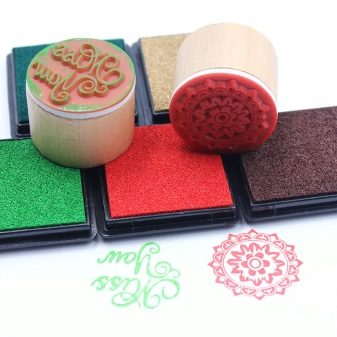
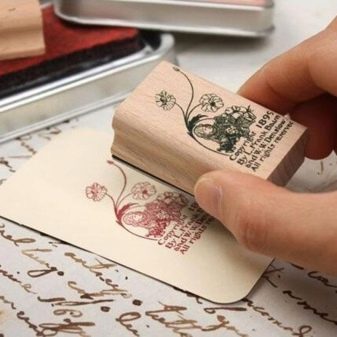
To create high-quality prints, you need to have several stamp pads in your arsenal, which are filled with paint or ink. The ink for stamp pads can be pigment ink or water-soluble. Pigment ink dries for a long time as it contains glycerin. Almost all of them are moisture resistant and look good against a dark background. There are several varieties of pigment inks:
- transparent -to create an adhesive layer or a watermark effect on paper;
- archival - durable, it does not fade from time to time, does not spread when interacting with water;
- small (Chalk ink) - opaque paint in pastel shades, usually used on a dark surface to create a chalk effect on the board;
- oil - they are used for stamping individual parts, they are easily absorbed into a porous surface, but on a glossy one they dry much longer, after complete drying, the image is clear and durable.
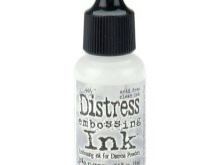
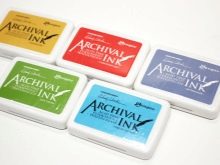
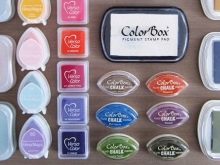
Dye ink is also known as watercolors. This ink uses a water-soluble dye as a coloring pigment. Watercolor ink dries faster than pigment ink, mixes easily with each other and can be washed off with water. They are often used for background or surface shading. On a dark background, a pale, barely noticeable trace is obtained.
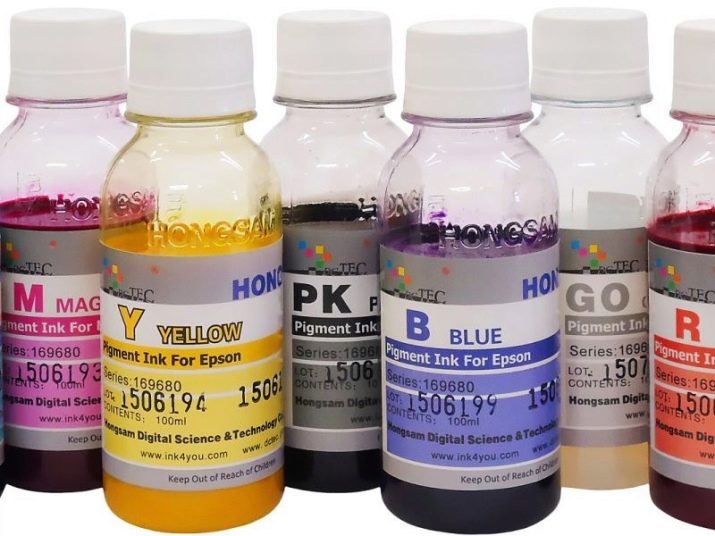
Care and storage
In order for the stamps to serve for a long time, you need to properly care for them.
Cleaning
The stamps must be cleaned after each use. Otherwise, the remaining ink will dry out in the form and the image will be blurry. Scrapbooking molds should be rinsed with warm, soapy water, or an old soft-bristled toothbrush can be used to clean tough curves. It is strongly not recommended to use alcohol and alcohol-containing substances for the care of stamps.
Alcohol has a strong drying effect, so the scrapbooking tool can crack. This will significantly degrade the image quality. And you should also avoid contact of wooden parts with water.
Storage
Acrylic stamps are sold in a set with foils - stands. It is recommended to return the printing tool to this foil after each use so that small debris does not fall on it. It is best to store stamps in a dark place in separate containers. Unsupported stamps should be stored flat without bending.

Stamping techniques
There are a huge number of different technologies for applying an image using stamping.
Layered stamping
This method is good because with the help of several pillows you can create not only a variety of transitions from one color to another, but also deep volumetric images. Layering can be achieved in several ways: when a re-stamp produces a richer color, or to create volume, when the subsequent print is less intense than the previous one.
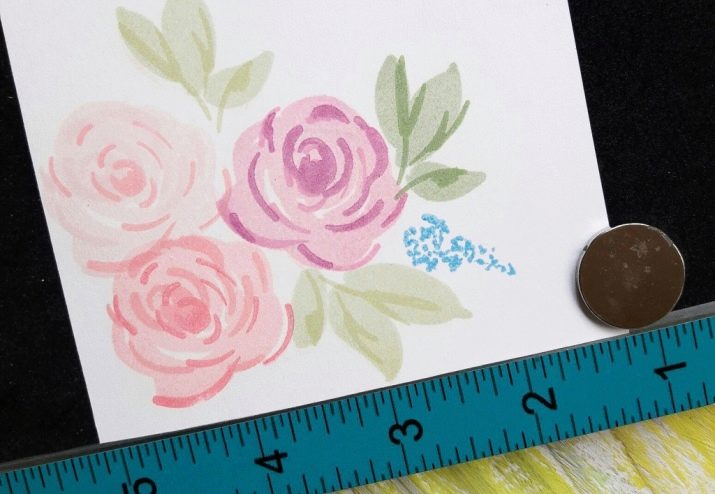
Stamping with multicolored markers
This technique is suitable for those who like bright and catchy images. It allows ink to be applied to the stamp itself without using an ink pad. To reproduce this technique, it is enough to purchase a set of high-quality markers and combine colors with each other.
It is better to use several tones of the same color, then the image will look harmonious.
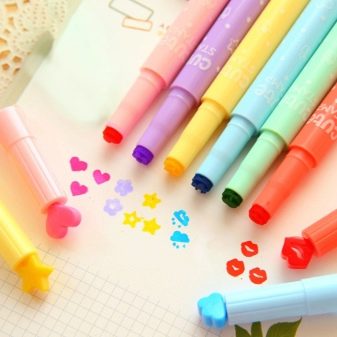
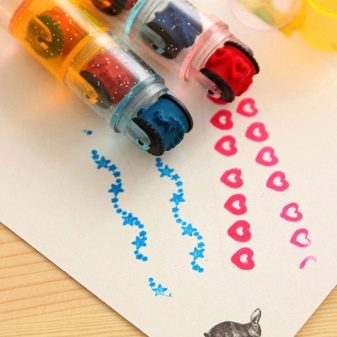
Stamping using stencils
For this method, you will need regular ink or paints, stamp pads, scrapbooking paper and stencils that you can make yourself or purchase ready-made. In this technique, you can decorate everything - from small items to wallpaper on the walls.
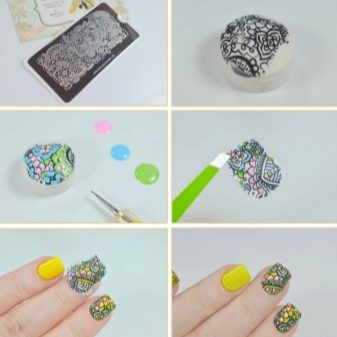
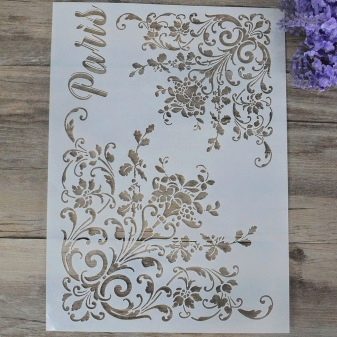
Stamping with distress ink
They are used in cases where you want to recreate a vintage style with an antiqued effect. This technology is actively used by designers to decorate furniture and other interior items.

Cartoon stamps
This style is actively used in the design of thematic postcards, as well as for telephone emoticons - all kinds of cute animals, flowers and other children's characters will be appropriate when congratulating a child, soulmate or beloved girl.
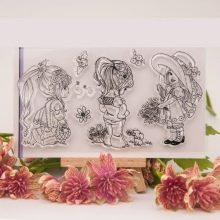

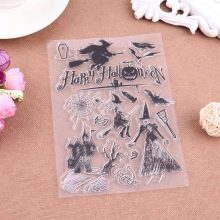
Rotating dies
These include all sorts of rotatable type numerators for changing the font. Most often these are numbers or letters. With the help of such a tool, you can make prints of memorable dates in your personal diary, sign handicrafts or memorable photos in flowery font.
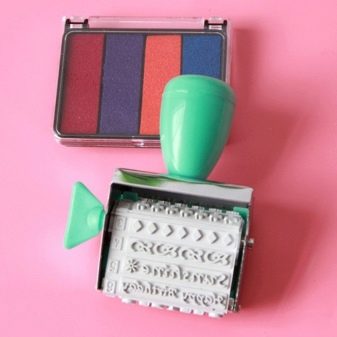
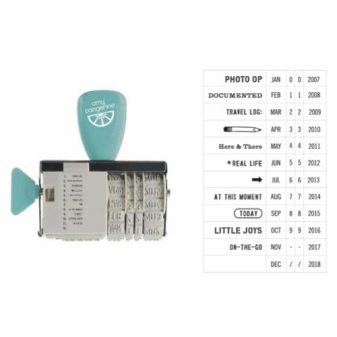
Stamps using shakers
This is the creation of a kind of decorative element with a hollow detail, which is filled with small decorative objects - colored sand, sequins, beads, bath salt, beads - the range is limited only by imagination.
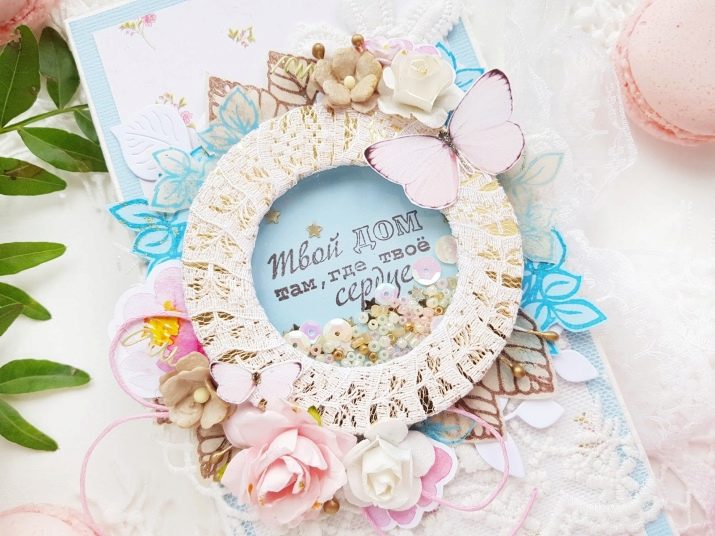
Ombre stamping
Smooth play of colors from one to another. To create an ombre, you need pads and distress ink. To create a smooth transition, it is necessary to apply ink in several stages, rubbing it in the center and gradually reducing its volume in order to achieve a paler color.
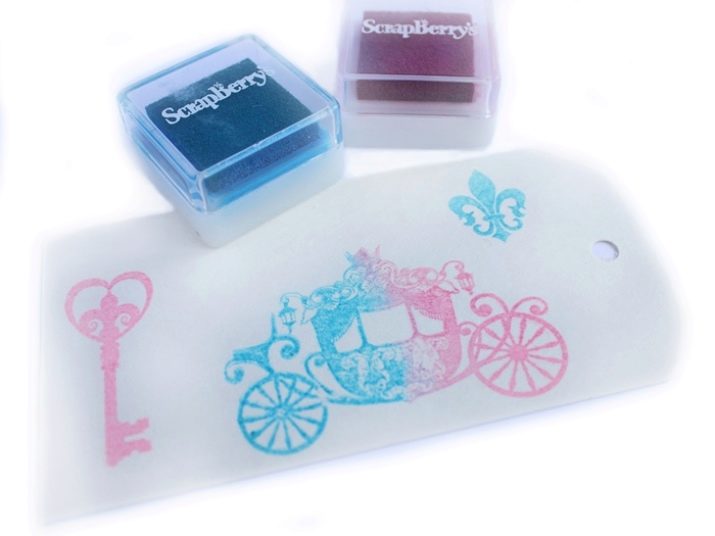
Stamping in watercolor style
This technology is usually used to decorate paper crafts and involves coloring the stamps themselves with your own hand.
For watercolor stamping, in addition to the stamps themselves, you need heavy watercolor paper, an acrylic or other block, and water-soluble ink.
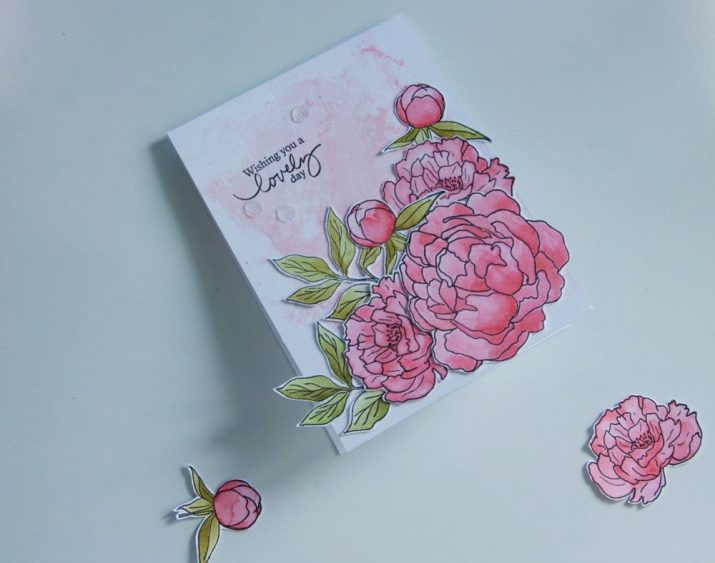
Stamping with splash effects
To fulfill this idea, you will need blanks in the form of droplets, specks or snowflakes. Better to take transparent silicone stamps - so you will see the whole picture and control the intensity of the application of the elements.

Stamping with embossing
This is the creation of a volumetric image. Often, ink and powder are combined to add volume to a drawing. And also in specialized stores you can look for special markers for embossing. Some of them are used in a set with powder, while others, for example, velvet, are used as an independent tool.
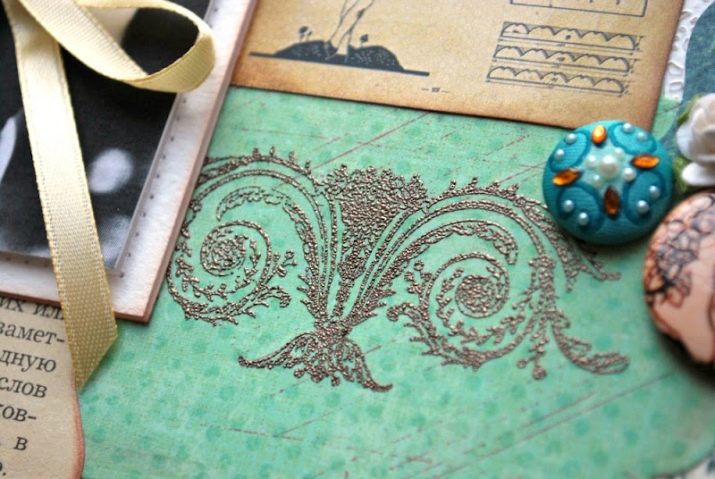
For information on how to use stamps for scrapbooking, see the next video.








